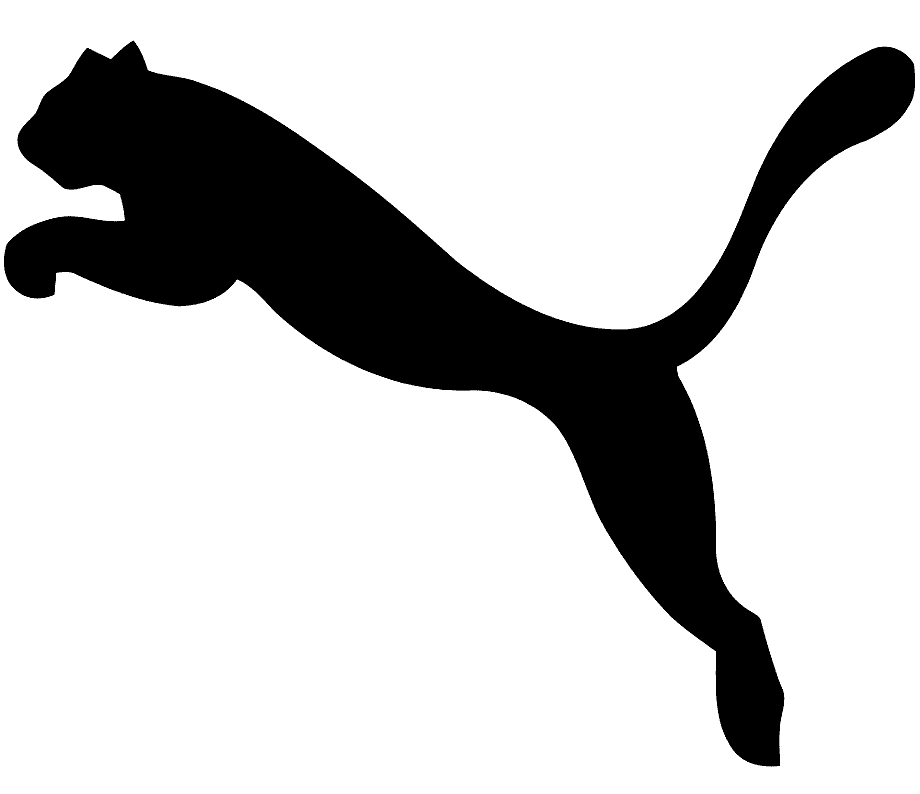It may be bordering close on 16 years since Aberdeen have won any trophy on the field of play however, off the field the Dons have scooped The Scottish Programme of the Year Award for a second season running and a third season in the last four.
 The Scottish Programme of the Year Awards are in their 38th season and it is the 30th consecutive season they have been sponsored by the Programme Monthly and Football Collectable magazine run by football historian John Litster.
The Scottish Programme of the Year Awards are in their 38th season and it is the 30th consecutive season they have been sponsored by the Programme Monthly and Football Collectable magazine run by football historian John Litster.
In the SPL Programme of the Year table, the Dons finished over 12 points clear of second place Dundee United with Celtic in third spot, Heart of Midlothian in fourth and Rangers in fifth. Hamilton Academical, who prop up the Clydesdale Bank League table also finished last in place in the Programme of the Year Awards following voting by the judges.
Litster said: “Aberdeen were clear winners in the SPL and I was a bit surprised that there was not more of a challenge to their crown. I thought one of the SPL sides would pick up the baton this season and give Aberdeen a run for their money but it did not really happen.”
When it came to the overall winner in Scotland, the Dons Matchday Magazine ‘Red’ came out favourably against the divisional winners in The Scottish Football League with Litster saying: “Clyde’s programme continues to be the best of the rest across Scotland and they of course, were winners for 12 seasons running from season 1995/96 however, their relegation through a couple of divisions has had an impact.
“Asking a Third Division club to compete with programme sales of a club in the SPL is just too much however, it should be pointed out that Clyde still produce a very good programme.”
 Litster commented on other matchday programmes produced by SPL clubs saying: “To put some sort of context around the programmes issued by SPL clubs, if any English Premiership side entered the Scottish Awards, they would probably win it. Aberdeen alone would be in contention on a UK-wide basis.
Litster commented on other matchday programmes produced by SPL clubs saying: “To put some sort of context around the programmes issued by SPL clubs, if any English Premiership side entered the Scottish Awards, they would probably win it. Aberdeen alone would be in contention on a UK-wide basis.
“You would expect the Old Firm to be challenging for top honours but that rarely is the case and you have to go back to season 1994/95 for a Rangers success as the best programme in Scotland with Celtic’s last top performance four years before that.
“These clubs devote significant resources into producing weekly magazines and that may affect the material available for match programmes.”
Litster added: “The biggest surprise to me was the low score that St. Johnstone attained from the judges as I felt it is a nicely put together and very readable programme.”
The programme at New Douglas Park has seen Hamilton finish bottom for a second consecutive season with Litster saying: "That is no real surprise as it is a fairly modest production.”
The full table for The Scottish Premier League is:
| 2010/11 | 2009/10 | CLUB | Score |
| 1 | (1) | Aberdeen | 83.83 |
| 2 | (2) | Dundee United | 71.57 |
| 3 | (4) | Celtic | 69.00 |
| 4 | (3) | Heart of Midlothian | 65.71 |
| 5 | (6) | Rangers | 64.71 |
| 6 | (5) | Hibernian | 61.43 |
| 7 | (10) | Kilmarnock | 56.17 |
| 8 | (8) | Motherwell | 53.14 |
| 9 | (9) | St. Mirren | 49.86 |
| 10 | (11) | St. Johnstone | 47.00 |
| 11 | (4) (FD) | Inverness Caledonian Thistle | 44.83 |
| 12 | (12) | Hamilton Academical | 40.86 |

In the SFL First Division, there was a dead heat in Fife between the ‘Blue Brasilian’ produced by Cowdenbeath and ‘The Game’ offered by Dunfermline with Litster explaining, “Despite these programmes being very different in terms of content and production, their scores were identical. I tried to determine a winner by counting back how many times each one was voted as the top programme by the individual judges but that produced a tie as well.”
The fact that they were so different may have been a factor in the tied scoring with Litster explaining: “Cowdenbeath’s programme provides a considerable amount of reading material, but it is produced to a tight budget and the print and paper quality is not of the highest standard.
“Dunfermline’s is a much slicker looking programme but I believe that several judges rewarded the very high standard of content from the Central Park issue, hence Cowdenbeath’s high score, while other judges were more impressed by the larger, glossier and more colourful East End Park issue. The joint winners are polar opposites in programme standards, and the joint award reflects their respective merits.”
Partick Thistle were a strong third with Morton being rewarded for a fresh impetus behind their programme with a move from tenth place to seventh with Litster explaining: “Last season the club acknowledged that something had to happen to improve their programme and they have done it. If there was a ‘Most Improved Category’, Morton would have scooped that.”
Ross County were a distant tenth with Litster advising: “Their programme has got better and I thought it would have scored higher that it did. However it is still predominately an advertising based production and they may want to speak to Morton to see how they went about moving away from bottom spot.”
The Scottish Football League First Division table is:
| 2010/11 | 2009/10 | CLUB | Score |
| 1= | (2) (SD) | Cowdenbeath | 73.00 |
| 1= | (1) | Dunfermline Athletic | 73.00 |
| 3 | (2) | Partick Thistle | 66.00 |
| 4 | (7) (SPL) | Falkirk | 64.50 |
| 5 | (3) | Dundee | 61.75 |
| 6 | (5) | Queen of the South | 53.33 |
| 7 | (10) | Morton | 52.25 |
| 8 | (6) | Raith Rovers | 52.00 |
| 9 | (5) (SD) | Stirling Albion | 49.75 |
| 10 | (9) | Ross County | 41.25 |

Livingston are doing as well off the pitch as on it in the Second Division with their ‘Roar’ programme matching Gary Bollan’s side by sitting at the top of the table with Litster saying: “A bit like their team, Livingston are well in front. ‘Roar’ is a substantial, glossy production as well as being a very good read. It deserves the award for its content.”
Airdrie United’s programme faired better in the Second Division than it had done in the First Division the previous season with Litster explaining: “I do not think that has had anything to do with dropping down a division, it is more to do with improved content. It was always quite a glossy production but there is more in it this season.
“I am pleased to see that East Fife have maintained a high standard and that Graeme Robertson at Dumbarton has been rewarded for all his hard work in their programme by a movement up the table.
Stenhousemuir finished in last place with Litster saying: “A bit like Hamilton Academical in the SPL, the Stenhousemuir programme is not overly invested in.”
| 2010/11 | 2009/10 | CLUB | SCORE |
| 1 | (3 - TD) | Livingston | 74.00 |
| 2 | (8 - FD) | Airdrie United | 70.71 |
| 3 | (3) | East Fife | 67.50 |
| 4 | (6) | Dumbarton | 63.17 |
| 5 | (7) | Brechin city | 62.33 |
| 6 | (8) | Peterhead | 61.50 |
| 7 | (7 - FD) | Ayr United | 58.00 |
| 8 | (4) | Alloa Athletic | 57.14 |
| 9 | (6 - TD) | Forfar Athletic | 55.86 |
| 10 | (10) | Stenhousemuir | 45.00 |

Clyde, who have produced the award winning programme ‘The Clyde View’ for nearly two decades now, easily won the Third Division title with an improved Berwick Rangers programme finishing in second place.
Litster gave his views on the programmes produced in this division saying: “Clyde have years of experience in producing a high quality programme and it shows. The Third Division table has changed and that is not only because of Clyde being in there for the first time.
“Montrose and Queen’s Park have tended to dominate recently, however Berwick’s move from seventh place to second is deserved. They produce a full colour programme and have added extra pages this season. They are another club that have tried to make their programme better and have succeeded.
“Elgin’s reward for an improved programme was a season overdue in my opinion,” said Litster before adding: “I was surprised they were second bottom last season and pleased to see them move up this time. The surprise to me this season was that Albion Rovers, who were top last season, have fallen to sixth place now.”
At the foot of the programme table is East Stirlingshire for a second consecutive season and Litster has words of comfort for the programme team at the ’Shire saying: “I thought they would have been off the bottom this season and perhaps in eighth place, however it is the judges (the programme editors and some experienced collectors) that have the final say.
“The standard in the Third Division is really good despite the lower sales figures in this division and everyone involved at each club should be pleased with a solid year in that division.”
The Scottish Football League Third Division table is:
| 2010/11 | 2009/10 | CLUB | SCORE |
| 1 | (1 - SD) | Clyde | 80.00 |
| 2 | (7) | Berwick Rangers | 71.67 |
| 3 | (5) | Montrose | 66.25 |
| 4 | (4) | Queen's Park | 56.25 |
| 5 | (9) | Elgin City | 50.00 |
| 6 | (1) | Albion Rovers | 48.75 |
| 7 | (2) | Stranraer | 48.00 |
| 8 | (8) | Annan Athletic | 39.00 |
| 9 | (9 - SD) | Arbroath | 35.00 |
| 10 | (10 | East Stirlingshire | 31.25 |

Summary of Awards
The wintry weather that engulfed Scotland from the end of November also affected the normally slick process of voting for The Scottish Programme of the Year Awards.
Litster explained: “In the thirty years Programme Monthly and Football Collectable have been involved, this has been the hardest season when it came to voting. Normally around Christmas time, all clubs in each division have hosted a home and away match against all of their opponents and therefore, the judges have a programme from each club to judge.”
“The postponements across November, December and January made that impossible so some clubs were voted on by six judges and others were voted on by nine judges. The marks are still substantially solid enough to form the tables and it just goes to show that the postponement of matches affect a lot more than just the two teams involved.”
The Co-operative Insurance Cup Final Matchday Programme – Celtic v Rangers, Sunday, 20th March, 2011
 Litster was asked to give an unbiased view of the Matchday Programme that was produced for The Co-operative Insurance Cup Final that was held at Hampden recently. Being a contributor, he was asked not to rate the articles, however he was asked to advise how it compared to other national Cup Final Matchday Programmes across Great Britain.
Litster was asked to give an unbiased view of the Matchday Programme that was produced for The Co-operative Insurance Cup Final that was held at Hampden recently. Being a contributor, he was asked not to rate the articles, however he was asked to advise how it compared to other national Cup Final Matchday Programmes across Great Britain.
Litster explained: “If Aberdeen and Clyde are the divisional leaders, then the SFL are the leaders when it comes to issuing programmes for individual games. There is a huge amount of content, in-depth and well thought out features and articles which have been sensibly commissioned. It was a quality production.
“The programmes for English Cup Finals are bigger in terms of production and are more expensive as a result but they probably do not have the same quantity, and certainly quality, of reading in them.
“The Scottish Football Association should be looking at the League Cup Final Matchday Programme when planning and preparing the Matchday Programme for the Scottish Cup Final in the same way SPL clubs should be looking at what Aberdeen produce.”
Looking Forward
A recent newspaper report had indicated that a number of SPL clubs were considering moving away from the Matchday Programme to produce a standard magazine across the division with a couple of pages left for individual team use.
It is not a new idea with Litster saying: “This topic comes up with just about as much regularity as summer football and appears when people have forgotten the reasons why it was rejected in the past. It usually surfaces every five to ten years and it is not something I would be in favour of but being a football programme collector, you would expect me to say that.
“Sales of programmes are down just now which is the same for any discretional purchase during difficult financial times and the same pattern is being seen in England. Clubs are quite right to look to see if their Matchday Programmes can be made to work or at least break even by either reducing costs or selling more.”
Litster explained the pros and cons by saying: “National advertising may initially generate a higher return but I have serious reservations about fans continuing to buy such a magazine throughout the season. The model that has centrally produced copy with a little added local flavour will probably go the same way as all Scottish football magazines have done in the past because fans only want to read about their own club and players.”
Local programmes can therefore outshine a central one with Litster saying: “Programmes can generate commercial income for clubs where basically local businesses make a donation to the club in return for programme advertising and even a trackside board. The clubs could well lose out on that with a central programme. The income derived from player sponsorship can also be quite considerable, and that is likely to be lost in a national programme. Sponsors won’t be happy if their contribution is restricted to a mention on a website.
“It would be hard to make a centrally produced programme viable and clubs in my opinion should be working on a basic model where programme sales equal the costs of producing the programme and they keep the revenue they generate from the adverts they themselves source.”
Litster expects the Matchday Programme to continue despite cutbacks at clubs as he explained: “A large number of fans and programme collectors are still very keen on them and for clubs, it is a good source of revenue through advertising.”
For further information on Programme Monthly and Football Collectable magazine,
log on to their website www.pmfc.co.uk





.png)












